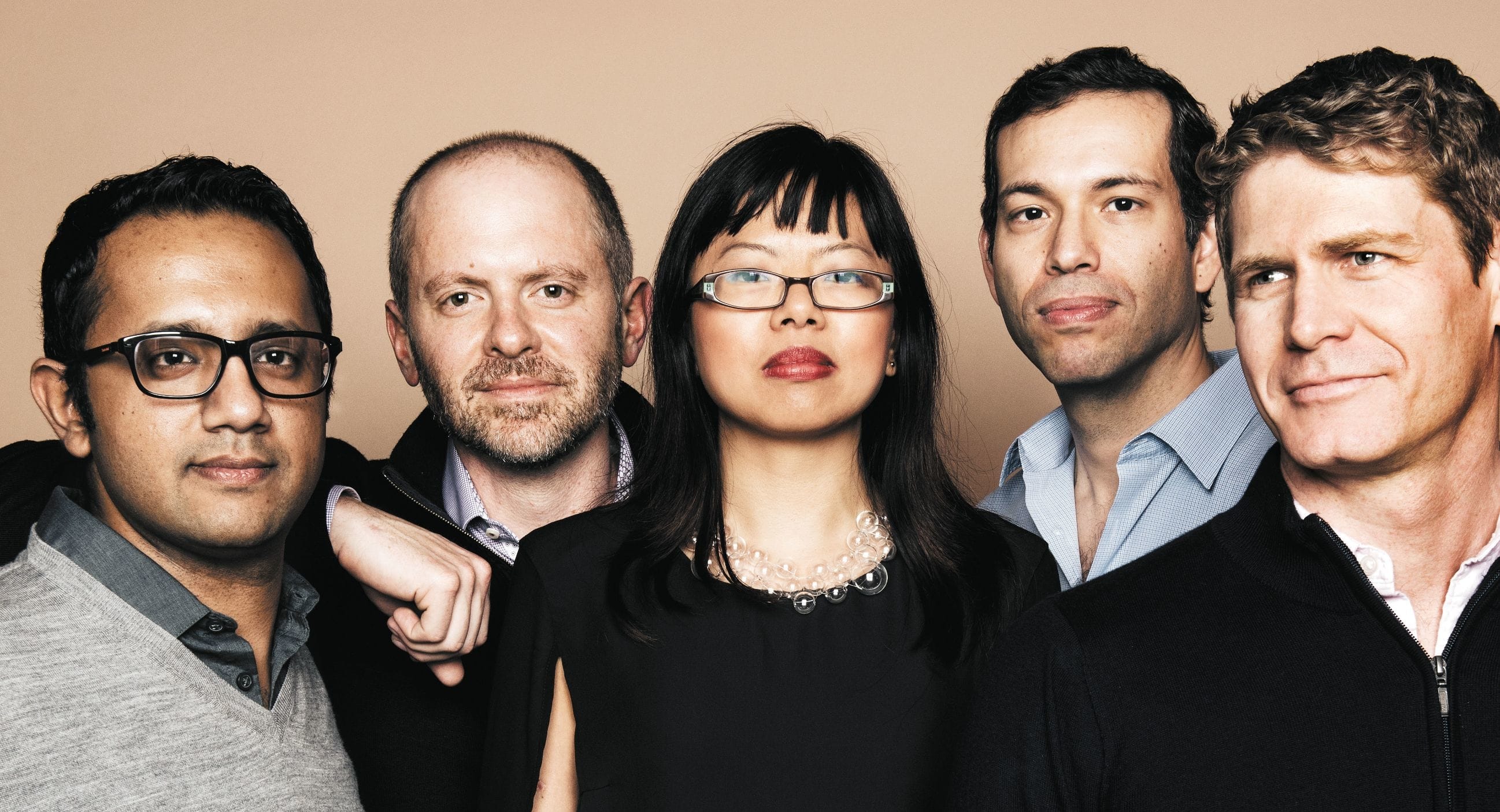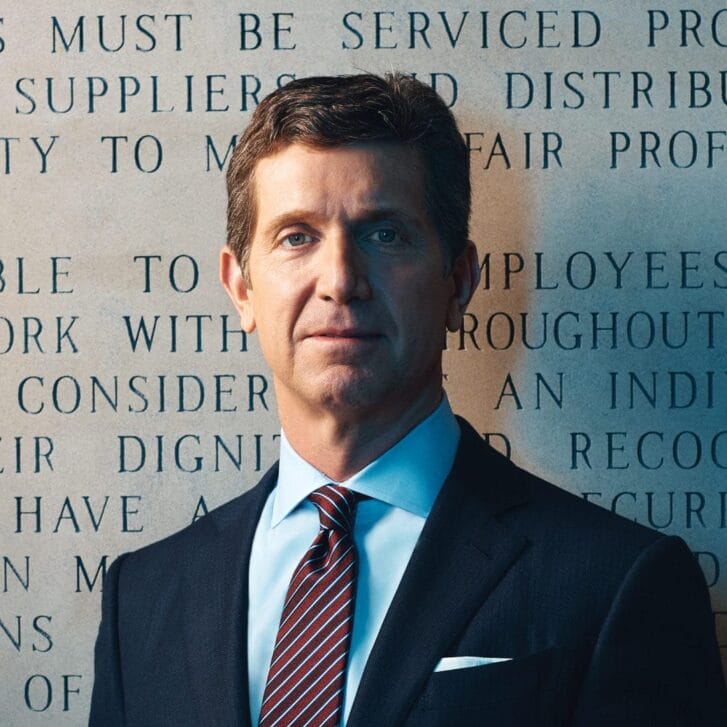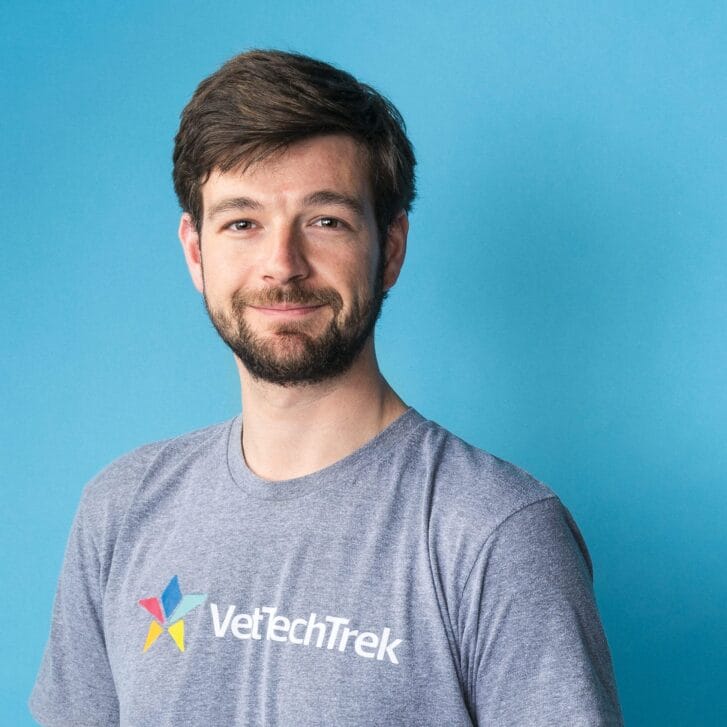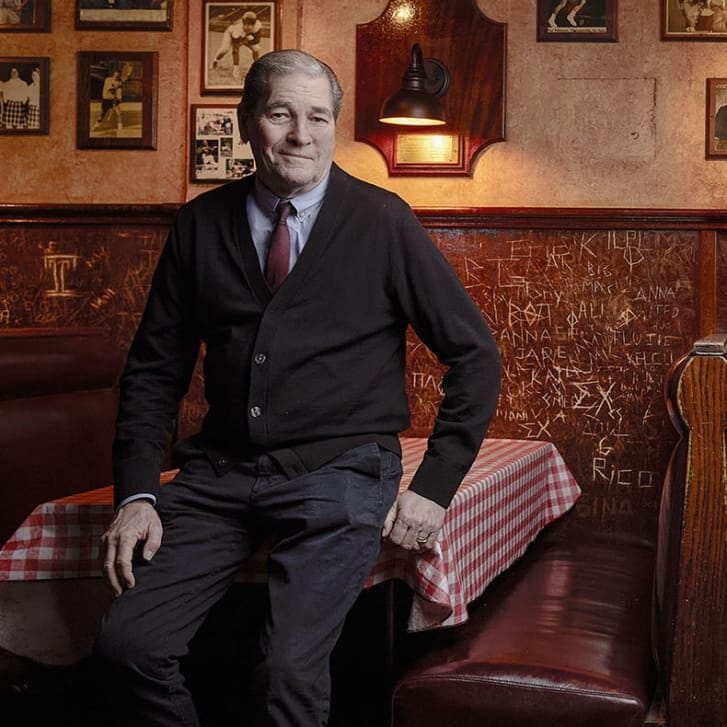In January 2014, a handful of Microsoft’s smartest engineers slipped away for a three-day off-site at a lodge in Woodinville, Washington, a few miles north of the company’s sprawling Redmond campus. On the table was the future—some were saying the survival—of Microsoft’s faltering flagship product, the Windows operating system.
The most recent release of the operating system, Windows 8, two years earlier, had—to put it politely—not met expectations. The disappointing reception from users coincided worryingly with plunging PC sales as consumers, developers, and mindshare flocked to mobile computing platforms such as Apple’s iOS and Google’s Android. Windows still powered more than 90 percent of the world’s personal computers, but the world was becoming a different place. Personal computers had lost their dominance. Windows was found on just 14 percent of all computing devices, and its traditional market was shrinking. In the ZDNet blog “Between the Lines,” a few months before the meeting in Woodinville, Steven Vaughan-Nichols wrote, “Most people in our recent debate over the future of Windows thought that the operating system could be saved. I’m sure many people in 1491 thought that the Earth was flat, too.” Suddenly, almost unthinkably, industry observers were talking about the end of an era that had defined the tech giant for nearly three decades.
There were other dark clouds. Microsoft CEO Steve Ballmer, who had made Windows a top priority, was on the way out, and the organization faced uncertain change. Some of the people in the room at Woodinville were leaders of Ballmer’s ill-fated foray into the mobile-phone market through the purchase of Nokia, an investment that was turning out disastrously. Windows Phones, coming late to the mobile bandwagon, had sold poorly, following the Kin, a much-hyped phone designed for social networking that was on sale for all of 48 days before Microsoft and Verizon killed it. Never mind that the Windows Phone had impressed reviewers with its brilliant design, and had tanked chiefly because it came with so few apps. The phones had repeated the kind of copycat, late-to-market pattern that critics said had characterized the company’s new offerings in recent years. The Zune MP3 player had chased the iPod into the music space and flopped. The Surface tablet had chased the iPad. The search engine Bing was still playing catch-up to Google, and lagging far behind.

Bernardo Caldas WG01: A 15-year Microsoft veteran, Caldas oversaw the financial modeling that justified giving away the Windows 10 upgrade for free.
The company was struggling with what Wharton Adjunct Associate Professor of Management Saikat Chaudhuri called “the incumbent challenge.” In an industry where growth and opportunity demanded nimbleness and innovation, Microsoft had become a mature business built around a dominant business model. Now the model was in danger of losing relevancy. Wharton Associate Professor of Legal Studies Kevin Werbach, quoted as far back as 2011 in the business school’s Knowledge@Wharton, said, “Microsoft’s great fear was always that it would turn into IBM, which it viewed as a bureaucratic organization living off of past glories…” Bill Gates’s legendary vision of powering a computer on every desk in every home had essentially been accomplished years before. From the outside, the prospects of any real success in Woodinville seemed slight. It had been a long time since anyone had called the company “visionary.”
Inside the room was a different story. The makeup of the group was not Microsoft personnel-as-usual. The company’s business and product development had historically, and famously, been driven by developers. (A common phrase around Redmond captured the company’s engineer-first approach: “We could build it, not we should build it.”) Indeed, here in Woodinville, leading the meeting was a brash 40-year-old engineer named Terry Myerson. But Myerson—in charge of the recently consolidated Phone/Windows/ Xbox platforms—wasn’t all about the code. He was an evangelist for a consumer-first approach who wasn’t afraid to shake things up. He’d invited Jeremy Korst WG03 to the table, a 40-year-old Wharton MBA who had just taken the helm for Windows brand and product marketing. Another key voice belonged to fellow Wharton grad Bernardo Caldas WG01, a veteran general manager with expertise in pricing and business modeling. “Bernardo and I were part of the early strategy conversations,” said Korst later, “only because of the shifting organization. We were at a table we normally wouldn’t be.”
Their roles turned out to be crucial.
Industry analysts had identified two possible courses for Windows to thrive in an increasingly mobile world. Paul Thurrott put it this way on the website IT Pro: Microsoft could follow the Apple model and continue to develop iterations of its traditional desktop operating system while creating a separate mobile platform on the side. Or it could protect Windows at all costs and simply build mobile platform features into it. The course that Myerson’s team mapped out bet on a third way. It was bold to the point of being visionary.
Four fundamental but risky objectives underpinned the plan. On the development side, the new operating system would be designed to work seamlessly across all of Microsoft’s platforms, from the miniature Raspberry Pi 2 to smartphones and phablets and tablets and Xboxes and laptops and 2 in 1s and PCs and mainframes, all the way up to the 84-inch video conference/touchscreen of Microsoft’s “Surface Hub,” which was still in development. There would be none of the usual Microsoft walls around product lines. Consumers switching from one device to a second to a third would work with a comfortable, familiar system across all three, whether using a keyboard or mouse or swipe or voice control or game controller. Developers around the world, attracted by the size of the combined market, would respond with a flood of innovative applications. First, though, Microsoft engineers would need to write all those lines of code. Ensuring quality would be difficult, given the number of different devices in the world, each with its own screen size and configuration, and given the dizzying number of applications they supported. The thousands of distinct end products needed to look and feel “similar and familiar,” no matter where they appeared or how they were accessed. The scaling challenge of such a plan, alone, was monumental.

Jeremy Korst WG03: With a “challenger mindset,” General Manager Jeremy Korst served as a lead architect of the Windows 10 brand marketing, rollout, and go-tomarket strategy.
The second objective was to get the operating system as quickly as possible onto as many devices as possible. Bernardo Caldas was tasked with designing the models on pricing and licensing. He would also run the analytics of a strategy that was completely foreign in Redmond: giving away the new upgrade, for free, to the massive market of users already operating earlier versions of Windows. What was the payback on the hundreds of millions in revenue the company stood to forgo? What would happen to the partnerships with Intel and the OEMs whose customers would be given incentive to stay on the machines they already owned, rather than buy new? And how would the manufacturers provide technical support in the meantime? How could Microsoft shift its business model that had sustained it for nearly 30 years toward a new model that combined new device sales with post-sale monetization?
Third, the new operating system wouldn’t be guarded like a state secret until coming out in a customary, splashy, over-the-top unveiling. Rather, the company’s developers would share the evolving code with users, to beta-test and help work out the bugs. For Microsoft, which had long prided itself on being in complete control of everything it touched, the strategy contained anxious amounts of uncertainty. What if opinion leaders such Mary Jo Foley or Tom Warren didn’t like the direction? What if the blogosphere blew up with criticism from impatient users who thought they were seeing a product more fully baked than it actually was? Wouldn’t this open the door to reverse engineering in Cupertino and Mountain View?
Finally, in a shift that was every bit as symbolic as strategic, Jeremy Korst and the marketing team would work in tandem with the engineers from the outset, to make sure the programmers were actually creating something that customers wanted and that would fly in the fast-changing marketplace. At the same time, the marketing team would build campaigns that aligned with what the engineers were creating. As Korst noted, that collaboration was a radical break from the typical Microsoft process. “There’s an old saying here,” he said, “that engineers build what they want, then hand it off to sales and marketing to go and sell. Windows 8 was a pinnacle of that model. Which is a big reason it wasn’t successful.”
Taken together, the risks looked almost entrepreneurial. But far more was at stake than the prospects of venture capital and growing up out of the garage. Microsoft’s core business supported a company with some 110,000 employees worldwide—more than 20,000 in the Windows division alone—with ripple effects into every corner of the global economy. The plan for the new operating system was a departure on so many levels from the core Windows business that the team in Woodinville adopted an internal code name for the upgrade. They would call it “Threshold.”
In important ways, the timing of the new plan was fortuitous. Microsoft’s stock had dropped nearly 12 percent during Steve Ballmer’s tenure, and the drying up of the PC market was sobering. But in February, less than a month after the off-site in Woodinville, Satya Nadella was named CEO. A well-respected consensus-builder from within Microsoft, Nadella believed in the power of Windows and vowed his support—and challenged Myerson’s group to turn Windows into a dynamic ecosystem built for the new “mobile first, cloud first” environment. Nadella was willing to sacrifice any momentum the Windows Phone had in favor of building the ecosystem—he immediately went about shedding jobs in the Phone division, and eventually wrote off the $7.6 billion investment, more than Microsoft had paid for Nokia in the first place. He encouraged collaboration across divisions and the cross-pollination of the best minds, wherever they came from. A bunch of senior people who had been used to managing silos left around the same time that the Windows/Xbox/Phone platforms were brought together. It felt like an older generation stepping aside as a new breed stepped up.
Jeremy Korst was one of the new breed. From the working-class town of Hoquiam out on the Olympic Peninsula, Korst had gotten his undergraduate degree at the University of Puget Sound in Tacoma before his MBA at Wharton. He was down to earth, not impressed by reputation or pedigree, a good listener, comfortable yielding in the face of a better idea. He was in his second stint with Microsoft. Initially frustrated by the company’s insular approach to getting products to market, he had left to work for T-Mobile. He had been lured back by Myerson’s fresh, customer-centric approach working on Windows Phone. Now, with the Woodinville plan blessed by Nadella and approved by the board and set into motion, it fell mainly to Korst to sell the new brand vision to the engineers. He not only represented marketing and the go-to-market strategy in the big regular engineer meetings called “Director Reviews,” he and his team kicked off the meetings.Korst brought in senior product manager Karen Wong-Duncan WG06 to help him pivot the entire culture toward the consumer. Like Korst, “KWD” was a Wharton alum who had come out of the Phone division. They shared the same “challenger” mindset that Meyerson and many managers in that division had—they’d been attracted to the phone business because it was a new frontier, a huge and challenging market with powerful brands already controlling the space. It wasn’t just a set of skills that the Phone managers brought to the Windows project, it was an orientation.
They immediately engaged the engineers. They worked up mock ads “to show them the North Star,” said KWD, “to show them where we wanted to go.” They put a storyboard together, and shared it with groups of 50 and 100 at a time, brought it around the company and on the road, and got feedback. They did market research, ran focus groups, came up with new ads and tweaked the storyboards, and kept bringing them back in front of the developers. “Keep these in mind as you build out the software,” KWD told them. They found the engineers surprisingly responsive, happy to be engaged in the wider conversation and excited to see how their work would be pitched to customers.
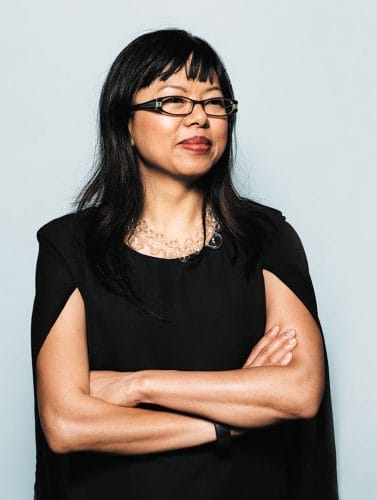
Karen Wong-Duncan WG06: Director of Consumer Innovation Strategy, “KWD” headed up the early research around customer needs.
Time and again, Wong-Duncan returned to things she remembered from the marketing class she’d taken at Wharton with Adjunct Associate Professor of Marketing Keith Niedermeier. She had internalized the importance of things like quantifying consumer trends and market segmentation—but she kept coming back to Niedermeier’s focus on consumer behavior, on how brands shape perception, on how the most successful brands create an emotional connection with their customers. “At the end of the day,” she said, “data are just data. You have to use them and then find something bigger. Consumer feedback can take you only so far—every focus group hears the same things.” She gave herself a playful, unofficial job description. “I do Consumer Strategery and Seismology,” she’d tell people. She listened for faint and loud signals. She put her ear to the market and tried to hear what was going on beneath it. She talked with users and studied the evolving operating system, listening for a beating heart.
Over time, Korst and Wong-Duncan refined the storyboard and narrowed on a message that had been part of the Windows operating system all along. The Windows legacy had been the democratization of technology—the software made for anyone, anywhere. It was difficult to market that idea, though, to any individual customer, to make the product feel special. What was needed was new language. The right language— aspirational, emotional, identity-forming—would help create the process and then drive decisions.
The unspoken purpose of Windows, they finally determined, had always been to enable people to build, to create, to explore, to discover. To do. Do Great Things. They tested Do Great Things against other tag lines, against messages from outside agencies, and it kept winning. The message felt authentic and aspirational. It inspired the engineers. The timing felt right. The millennial culture was a start-up culture, the makers movement well underway. Someone noticed that DO was part of the word WINDOWS, and some graphic storytelling was born. The message resonated. Korst and Wong-Duncan and the rest of their team set about articulating it and then ensuring the product was built to bring it to life.
“We had more than a billion customers already using our product,” said Korst, “probably by default more than choice. We wanted them to choose it. We wanted to put a choice in front of them, and give permission for other brands to offer a competing choice as well. For example, to Apple customers: “Do you want to consume beautiful things, be artistic, be a part of the ‘in’ crowd? Or do you want to make a difference, to do great things?”
Myerson and Korst brought in another Wharton grad, Stella Chernyak WG99, to lead product strategy for Microsoft’s business and education customers. Chernyak had a master’s in solid state physics from the Moscow Institute of Physics and Technology, a comfort with data, and a history with Microsoft dating back to when Bill Gates was still CEO. She was responsible for reaching out to the Gartners and Forresters, the banks, the health care systems, the defense industry, the airlines, the manufacturers of PCs and consumer electronics, the largest and most important of Microsoft’s customers, and persuading them that the Microsoft that she and they both knew was truly in the process of reinventing itself. She invited them—many of whom were miffed at Microsoft’s history of arrogance and secrecy, especially during the Windows 8 period—to be not just customers, but partners. She let them know what was in development and asked for their feedback and ideas.
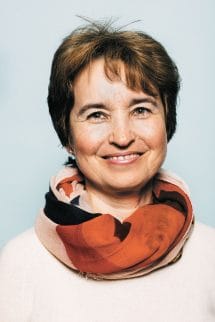
Stella Chernyak WG99: A technical background helped Chernyak direct outreach to Microsoft’s largest commercial customers and analyze their response.
She created a process for communicating—asking thousands of customers about their wants and needs, their thoughts on the emerging operating system, then tabulating and analyzing the responses to see which were unique, which formed patterns across categories. She met with customers across the country and abroad, and invited the most important of them to meet on site in Redmond, to be an ongoing part of the dialogue. She knew that Microsoft couldn’t possibly satisfy every request, but she looked for pieces that were useful, for ideas and concerns that were consistently brought up. She discovered that simply asking for feedback changed the dynamic with customers.
She told customers to think about their end games, and that Microsoft would creatively try and help them get there. Perceptions shifted. “It was not about a single aha! moment,” she recalled. “But with the outreach, we gradually got to the outcome we were working toward. And we were developing long-term relationships in the process.”
On the Redmond campus, the culture was shifting, too. Satya Nadella reinforced a kinder and gentler atmosphere—collaborative more than combative, integrated rather than insulated. He still encouraged vigorous debate, but trusted the most reasoned and thoughtful voices in the room, not the loudest. He encouraged team building.
On the new Windows team, collaboration went beyond the meeting rooms. Korst, KWD, Chernyak, Caldas, and Jeremiah Marble G11 WG11—yet another Wharton grad on Korst’s team, in charge of designing the beta-testing program—worked from the second floor of Building 37 on Redmond’s east campus. Knowing that team culture would be critical during the intense period ahead, they instituted a Thursday end-of-the-day snacks and drinks ritual, right there in the office. They worked out at the same fitness club. On weekends, they often hiked together, Tiger Mountain, Mount Si. They ran together in a St. Paddy’s Day fun run. Someone put up a sheet of butcher paper in the hallway and people scrawled—by hand, skipping the synced electronic calendars—what they had going on outside of work and invited others to join. They took cooking classes, competed against each other in chili cook-offs and holiday drink contests. (“We’re a competitive group,” said Korst.) And they traveled together, spreading the new Microsoft gospel, to Vegas and Barcelona and Tokyo and Australia, feeling more like a rock band on tour than techies on a business trip.
Jeremiah Marble’s beta-testing program turned out to be even more transformative than expected. He brought a world view to his work that was broader than most. He had been consulting for an investment bank on Floor 62 of the World Trade Center’s south tower on September 11, 2001, survived the attacks, and reconsidered his career. He quit and joined the Peace Corps, did service work in the Dominican Republic, lived in Cambodia, Laos, and Vietnam. He focused on climate change issues. He developed educational software for UNESCO. Along the way, he grew to believe in pragmatic idealism and in the power of tools—and that the smart phone, in the developing world, was the center of a better future. At Wharton he got his MBA/MA from the Lauder Institute and joined Microsoft’s Windows Phone division.
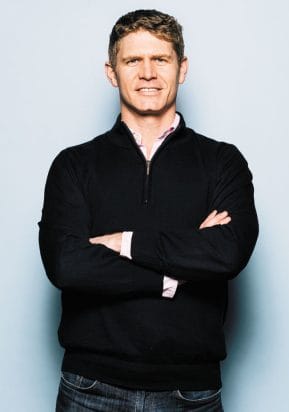
Jeremiah Marble G11 WG11: Marble, a Senior Manager, brought millions of passionate betatesters in on the project early in the product cycle.
He launched the new operating system’s brand new “flighting program,” which provided beta versions to select customers to see what was working and what was crashing. Early on, he realized how much more the program could do beyond fixing bugs. The beta-users who were willing to take a chance on minimally tested software, knowing full well it could blow up their devices, turned out to be super technical and super big fans of Microsoft. For a company struggling with the monumental challenge of building out the new operating system for such a colossal number of platforms and configurations, the crowd-sourced feedback was a godsend. Maybe a savior. Marble formalized and re-imagined the flighting program as the Windows Insider Program, and openly invited the company’s most passionate users to become co-creators of the new operating system. The engagement and interest spread like grass roots. By the time of the launch, more than seven million users would be part of the Insider Program, from every country in the world, including Antarctica and the Vatican City. Marble analyzed the massive data—collecting, formatting, and passing along the feedback from millions of users so it could be useful to the engineers. He managed the Insiders’ expectations and responded positively to negative feedback.
The initial concerns that the tastemakers might object or that frustrated users would complain never materialized. The positive spirit of the Insider Program was overwhelming and infectious. Nobody seemed to notice or care if engineers in Cupertino were taking part. The pre-release program designed to help the engineers turned into a public relations and marketing coup. Bloggers and journalists began writing about the new culture brewing at Microsoft, about the monolithic ship starting to turn. Before the new brand was even launched, it had a real live community behind it.
Bernardo Caldas ran the pricing models and analytics. He managed a team of 25 or 30 people, who marveled at how cool and rational Caldas remained when the conversations around him grew heated and tense. They were talking huge numbers and high stakes, but Caldas trusted what his numbers told him. The adoption models he developed with his Finance counterparts were based on concepts he learned from Professor Jehoshua Eliashberg. (He could still recall the class number and name, MKTG 771: Models for Marketing Strategy.) From that course, he took the case studies relating to the motion picture industry and applied the concepts to Microsoft customers. He based his pricing and licensing recommendations on the discrete choice modeling research, statistical models, and other techniques he’d gleaned from Wharton’s Pricing Policy course and the school’s highly regarded quantitative marketing curriculum. He determined that the free upgrade was a good risk. The fundamental pillars of the plan were holding.
At the lightly produced, almost casual, announcement of the new operating system, in San Francisco in October of 2014, nine months before the free upgrade would become available to the general public, one symbolic moment stood out.
Following months of internal debate, the name announced in San Francisco was a surprise: familiar but not routine. Windows 10 was bigger than a standard upgrade (skipping straight over 9.0), and it promised to do great things—even as it remained a familiar brand to its existing customers around the world. There would be no major upgrade again. From here on, the operating system was a service, not a product. It would be continually updated and supported for the lifetime of the device, at no cost. Windows 10 was the end game, and would keep getting better over time.
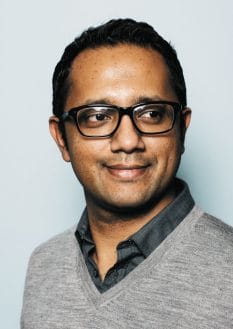
Adi Hariharan WG10: The newest Wharton member of the team, Hariharan works, post-launch, at the interface of marketing and engineering.
The Wharton pieces in all of this were unplanned, but they fit. Doug Smith, himself a graduate of Wharton’s Executive Education program, said, “I’ve helped lead Microsoft’s MBA recruiting process for years, and it doesn’t surprise me that so many Wharton folks ended up driving Windows 10. More so than from other schools, Wharton MBAs are strategic and data-oriented. They bring clarity to marketing.” Aaron Woodman, a senior director who led brand and consumer strategy for Korst, said the Wharton group reminded him of passages in Zen and the Art of Motorcycle Maintenance. “People understand motorcycles differently,” he explained. “Some understand the motors. Some understand the experience of going fast and free. It’s rare to find those two kinds of understanding in the same person. But every one in the Wharton group has it.”
Wharton’s Saikat Chaudhuri confessed that he enjoyed watching the Windows 10 project unfold. “Satya wanted to play in all the key markets, but do it on Microsoft’s terms, using Microsoft’s strengths,” he said. “In a way, that’s exactly what Wharton does. It teaches its students, for instance, that innovation is important not just for start-ups, but for established businesses.”
The Windows 10 upgrade was officially released at the end of July 2015. Reviews were instant, and raving. Within 24 hours, the new Windows was already helping people create and make and do things on 14 million computers—the fastest-ever adoption of an operating system. The incumbent tech giant announced that within two years, that number would be an almost mind-boggling one billion. For the first time in recent memory, nobody doubted that Microsoft could do it.
Jim Collins is a freelance writer from New Hampshire and Seattle. He’s the author of The Last Best League, an exploration of the most competitive amateur baseball league in the country.
Published as “It’s a 10” in the Spring/Summer 2016 issue of Wharton Magazine.




















